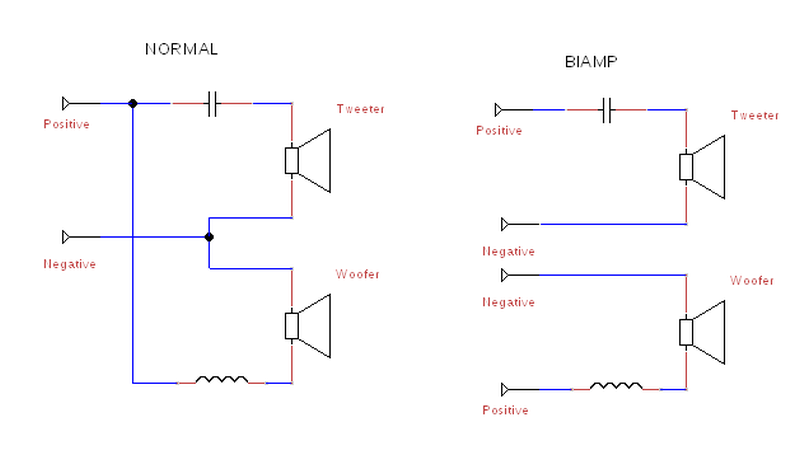 |
Speaker Asylum General speaker questions for audio and home theater. |
For Sale Ads |
 |
Speaker Asylum General speaker questions for audio and home theater. |
For Sale Ads |
Use this form to submit comments directly to the Asylum moderators for this forum. We're particularly interested in truly outstanding posts that might be added to our FAQs.You may also use this form to provide feedback or to call attention to messages that may be in violation of our content rules.
Original Message
RE: Please explain bi-amp crossover to me
Posted by neolith on February 22, 2017 at 13:07:30:
Speaker level biamping is, to me at least, a bit of a gimmick. The advantages are probably the same as biwiring, which I also find somewhat dubious. Obviously, there are many others who disagree. So be it.
Here is a diagram of a normal simple crossover and the equivalent biamp arrangement. If you follow the signal from the "positive" input it splits - one part goes through a capacitor (high pass filter) to the tweeter and returns to the negative post. The other part goes through the inductor (low pass filter) to the woofer and again returns to the negative post.
With the biamp setup, one amp supplies the woofer and the other the tweeter so the two speakers are electrically separate. However they both are receiving identical signals and just rejecting the "unused" portion. In fact there is no "crossover".
